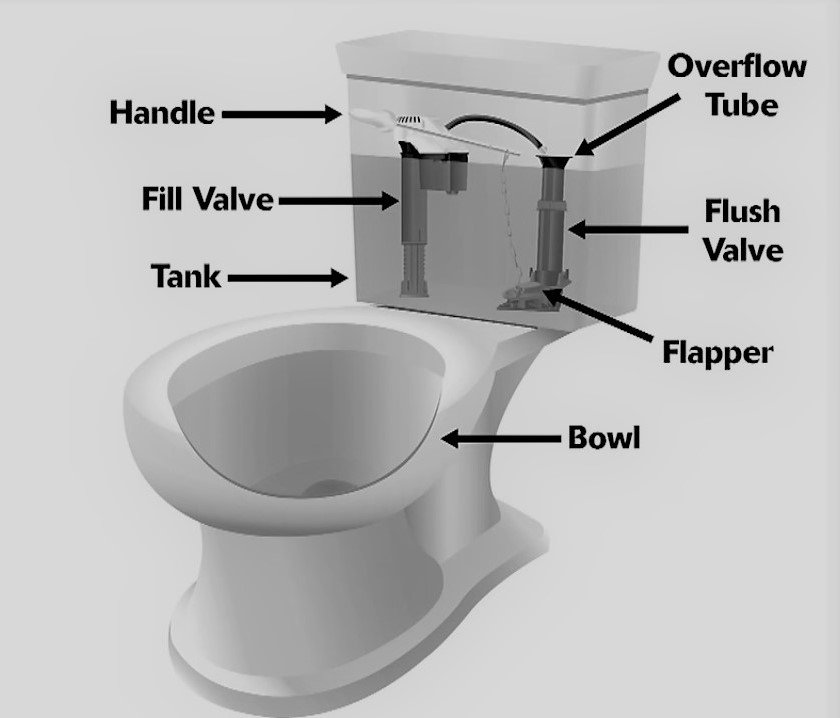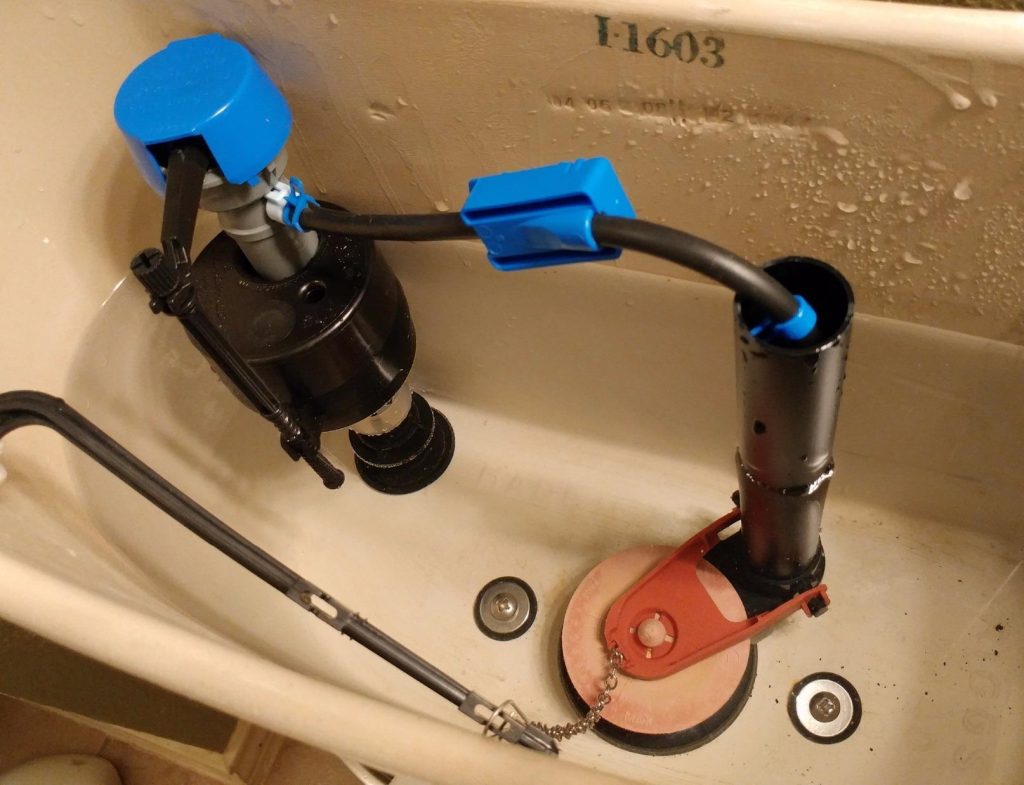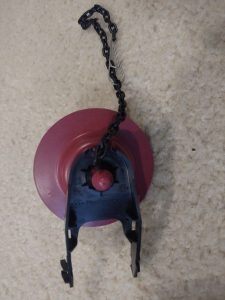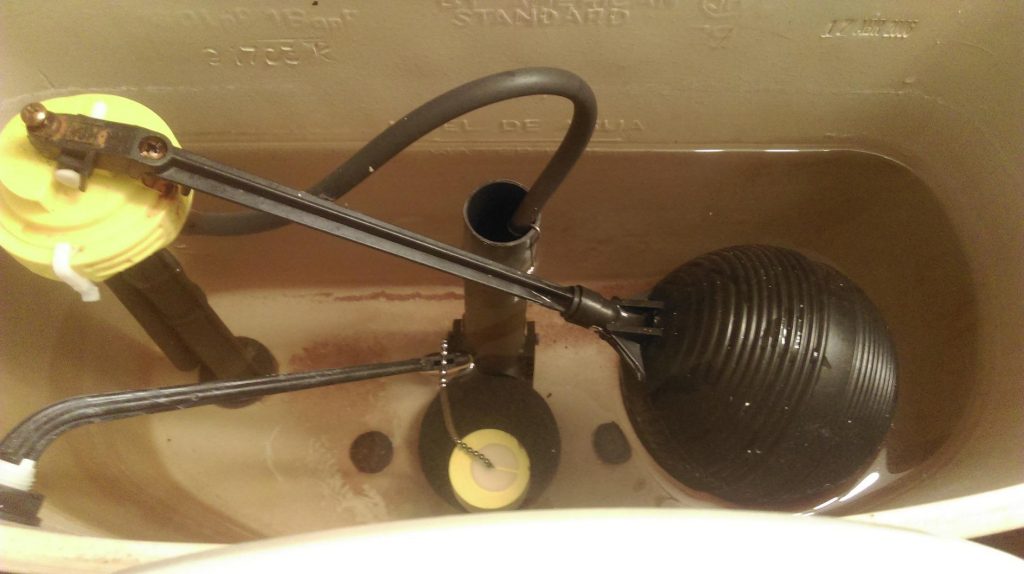Does Your Toilet Flush Twice? Here is How to Fix it
Last Updated on August 6, 2023 by toilethaven
Why Does My Toilet Flush Twice?
Have you noticed that when you flush your toilet, it flushes normally, then almost immediately, your bowl fills with water and flushes a second time? Your toilet is therefore flushing twice, a problem also known as double flushing.
The main reason your toilet is flushing twice is that the toilet flapper takes too long to fall close and seal the flush valve opening, causing more water to flow to the bowl after the initial flush. It could also be that the tank’s water level is too high.
To fix a toilet flushing twice, adjust the cone on the flapper to open up larger holes, making it less buoyant and close faster. If you have a lightweight flapper, you will need to replace it with a heavier model. Also, lower the water level in the tank if it is too high.
Diagnosing why your toilet is flushing twice would be helpful first to understand how a toilet works. When you understand what each toilet part does, you can fix a double-flushing toilet and other common problems.
How a Toilet Works

Most flush toilets are gravity flush toilets. This means that water flows flow the tank to the bowl using gravity, and when it gets to the bowl, a siphon effect is created that sucks the waste from the bowl to the drainpipe.
You may have a single-flush or a dual flush toilet. A dual flush toilet mostly uses flush buttons to flush, while a single flush toilet uses a trip handle, mostly located on the side or front of the tank.
A dual flush toilet does not have a toilet flapper and will, therefore, hardly flush twice compared to a single flush toilet.
As we look at how a toilet works, we will focus on single-flush toilets that use a toilet flapper.
- The toilet handle: This is where the flushing process starts. It is located outside the toilet tank but has a long arm inside it. To flush the toilet, you push the toilet handle down.
- Lift chain: The lift chain is connected to the toilet handle arm and hooked to the toilet flapper. The lift chain is normally slack when the toilet is not in use. When you push the handle down, the chains pick up some tension and lift off the toilet flapper.
- The toilet flapper: This is the main culprit if your toilet is flushing twice. It is a rubber seal that sits at the top of the flush valve opening. It prevents water from running into the bowl all the time and will only open during flushing. When you push the flush handle down, the lift chain will lift the flapper off the flush valve opening allowing water to flow down to the bowl for flushing. The flapper should fall back in position immediately, but if it doesn’t, water will still flow down to the bowl after flushing has already happened, triggering a second flush.
- The fill valve: The toilet fill valve is responsible for refilling the tank after each flush. It is connected to the toilet float, which moves up and down in the tank controlling the opening and closing of the fill valve. Your toilet will either have a float ball or a small float cup. If the fill valve is not properly adjusted, the water level in the tank might be too high, meaning it will take longer to flow into the bowl, which will also trigger a double flush.
How Do You Fix a Toilet That Flushes Twice?
Now that we have seen how a toilet works, fixing a double-flushing toilet should be easy and fast. The good thing is that fixing a toilet that flushes twice is cheap since the replacement parts don’t cost much, and you can comfortably DIY it.

Before going ahead and fixing a double-flushing toilet, you will first need to know whether the problem is with the flapper or the fill valve. Here is how you do it:
- Remove the toilet tank lid and place it away.
- Check the water level in the tank to see if it’s too high. Although this is not a problem most of the time, there is still a chance it could be. The water level should ideally be about an inch below the overflow tube. The toilet overflow tube is the large pipe in the middle of the tank that directs excess water down to the bowl to avoid overflowing.
- Flush the toilet and observe how long the flapper takes to fall back to the flush valve. If it takes too long, then it is what you need to fix.
1. Fix the Toilet Flapper
- Turn off the water to your toilet. The shut-off valve will be located on the wall behind your toilet. Turn it clockwise or pull it out if it’s a push/pull valve.
- Flush your toilet and hold the flush handle down to remove as much water as possible.
- Remove the tank lid and place it in a safe place where it won’t fall off and break.
- Check the type of flapper you have. If it’s the adjustable type, turn the dial to expose larger holes. The larger holes will allow the air trapped in the flapper to escape faster and therefore fall down in position as fast as it should.
- After adjusting the flapper, set it back in position and turn on the water to the toilet.
- Flush the toilet to see if it flushes normally or if it flushes twice.
If the toilet flushes once as it should, then your problem has been solved. If it is still flushing twice or your flapper is not adjustable in the first place, you will need to replace the toilet flapper.
It is important to make sure that you choose the right toilet flapper. If you have the problem of a toilet that flushes twice, make sure you at least get a heavier flapper than the one you currently have.
Korky universal toilet flappers are some of the best. Alternatively, you may buy a flapper from your toilet manufacturer, which should work perfectly. To do this, write down your toilet model number and ask for a matching flapper in your local home improvement store. Mostly, your toilet model number is stamped inside the toilet tank.
If you decide to buy a universal toilet flapper, make sure that you get the right size. The size of the flush valve determines the size of the toilet flapper. Flush valves are normally 2-4 inches in size.
How to Replace a Toilet Flapper

Once you have bought the right flapper, installing it should not take you more than 10 minutes. This is how you do it:
- Turn off the water to the toilet.
- Lift off the tank lid and place it away.
- Flush the tank completely.
- Unhook the lift chain from the flush handle arm.
- Remove the flapper ears from the overflow tube pegs
- Take out the flapper and trash it.
- Put the new flapper on the flush valve opening.
- Hook its ears to the overflow tube pegs.
- Connect the lift chain to the flush handle arm.
- Adjust the lift chain length. It should normally have a ½ inch of slack when not in use.
And that should fix a double-flushing toilet with a defective toilet flapper. Flush the toilet to be sure.
2. Adjust the Water level in the Tank

This sometimes happens when you have replaced your toilet fill valve on your own but did not correctly adjust the toilet float height. The toilet float height determines the level of water in your toilet.
Adjusting the level of water in your toilet tank is pretty easy. Whether you have a float ball or a float cup, you will only need a screwdriver.
- Remove the toilet tank lid and place it in a safe place.
- If your toilet has a float ball, check where the float ball arm is connected to the fill valve. You will see one screw. Use the screwdriver to turn the screw clockwise until the water level has decreased considerably.
- Flush the toilet to see if it will flush once or twice.
- Keep adjusting the float ball until you solve the problem.
- If, on the other hand, you have a float cup which is normally mounted on the fill valve body, you will see a long plastic screw adjacent to the float cup.
- Use the screwdriver to turn it clockwise until the water level is at the desired height.
- Flush the toilet to confirm that the double-flushing toilet problem is fixed.
And that is simply how to fix a toilet that flushes twice. If you are uncomfortable undertaking such repairs on your own, you should call a plumber to do it. It may cost you about 100 dollars, but the amount may change depending on your location, among other factors.